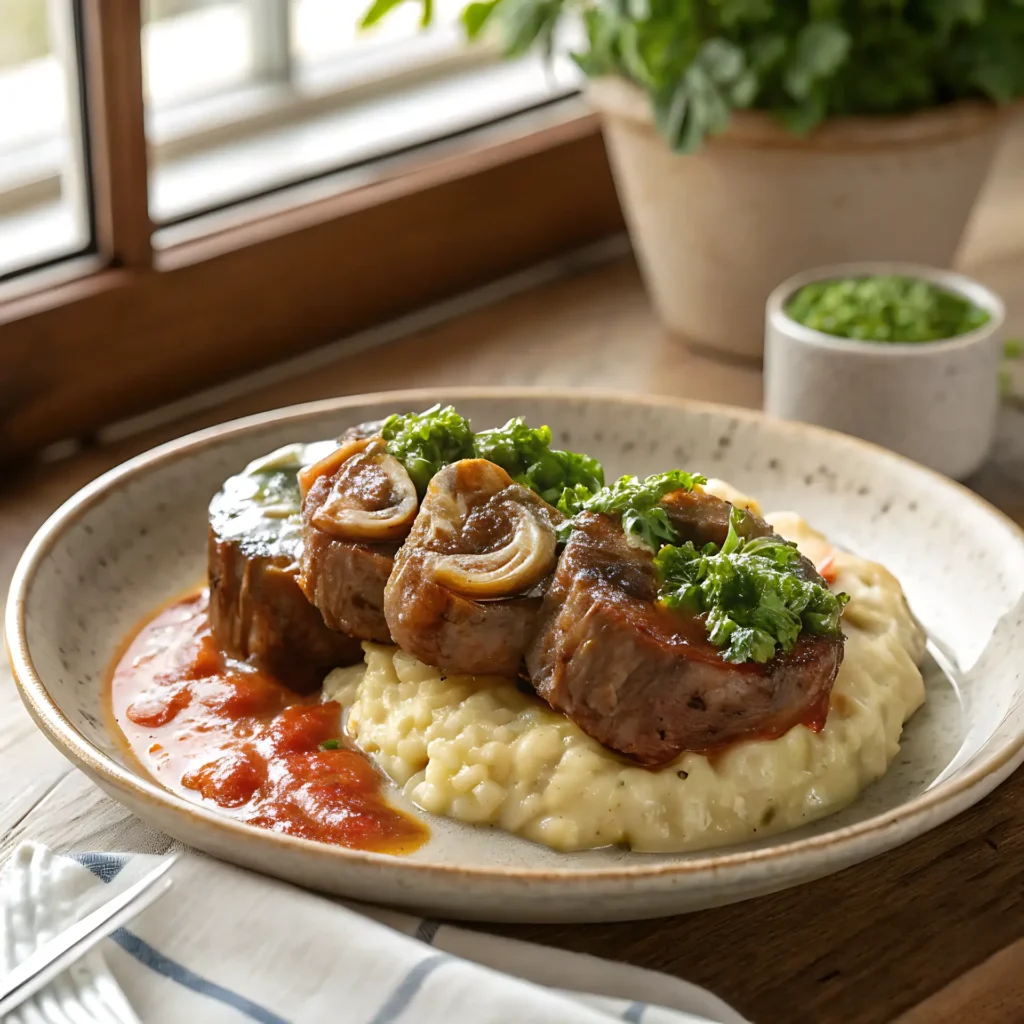The Ossobuco alla Milanese it is one of the most representative dishes of the Italian cuisine, and its history reflects the gastronomic wealth of the city of Milan. This hearty stew, whose name literally means "bone with a hole", is prepared with slices of beef with a bone, a cut, juicy and full of flavor that, when cooked slowly, it becomes a delicacy full of soft textures and flavors deep. The Ossobuco not only is this a tasty dish, but also a sample of the tradition in milan, where the simmer and the fresh ingredients of the season are the key to exceptional results.
The legacy gastro Ossobuco Milanese and their evolution in the global kitchen
Although the exact origin of this dish is still being debated, it is believed that the Ossobuco alla Milanese he began to gain popularity in the NINETEENTH century. Some even claim that it was in the restaurants milanese, where this dish is refined to become a gastronomic gem that is still present on menus around the world. Traditionally, it is served with risotto alla Milanesewhat makes this a full plate, comforting and full of flavor.
Recipe Ossobuco alla Milanese
Ingredients:
- 4 slices of beef with bone (ideally, slices of leg of veal)
- 2 tablespoons olive oil
- 1 carrot, peeled and chopped into small cubes
- 1 stalk celery, chopped in small cubes
- 1 onion, chopped in small cubes
- 2 ripe tomatoes, peeled and chopped
- 1 cup dry white wine
- 1 cup beef broth
- 2 cloves of garlic, finely chopped
- 1 sprig of fresh rosemary
- Salt and pepper to taste
- For the gremolata:
- The grated rind of 1 lemon
- 2 tablespoons chopped fresh parsley
- 1 clove garlic, finely chopped
Preparation:
1. Sealing of the flesh:
In a large skillet, heat the olive oil over medium-high heat. Season the slices of veal with salt and pepper. Place the slices of meat in the pan and séllalas on both sides until golden brown. This will seal the juices of the meat, preserving its taste.
2. Cooking vegetables:
In the same pan, add the carrot, celery and onion. Cook over medium heat until the vegetables are soft and slightly golden brown.
3. Deglaze with white wine:
Add the white wine and let it evaporate almost completely, scraping up any browned pieces gold in the bottom of the pan with a wooden spoon.
4. Add the tomatoes and the broth:
Incorporates chopped tomatoes, the beef stock and the rosemary sprig. Brought to a boil and then reduce heat to simmer.
5. Slow cooker:
Place the slices of beef back into the pan, making sure they are submerged in the liquid. Cover the pan and let the Ossobuco cook over low heat for 2-3 hours, or until the meat is tender and peel off easily from the bone. During cooking, check periodically that there is enough liquid, adding more broth if necessary.
6. Prepare the gremolata:
While the Ossobuco is cooking, prepare the gremolata by mixing the grated lemon peel, parsley, and garlic in a small bowl. This seasoning fresh is added at the end of cooking to add a touch of vibrant and fragrant dish.
7. To serve:
When the Ossobuco is ready, put it on plates and sprinkle with the gremolata. Serve immediately, accompanied by risotto alla Milanese or mashed potatoes.
Nutritional information per Serving (approximately):
- Calories: 350 kcal
- Proteins: 30 g
- Fat: 20 g
- Carbohydrates: 10 g
- Fiber: 2 g
- Sodium: 450 mg
Benefits of Ossobuco alla Milanese
The Ossobuco alla Milanese it is much more than a delicious dish. This stew of beef is a rich source of proteins and essential minerals, such as iron and zinc, which are essential to maintain a good health. In addition, the slow cooker in their own juice allows the meat to retain all of its nutrients, which makes it a nutritious choice for a comfort food.
Variations of the Ossobuco alla Milanese
Although the Ossobuco alla Milanese it is traditionally served with risotto alla Milanesethere are also various ways to customize the dish according to your personal preferences:
- Ossobuco with polenta: Instead of the risotto, the ossobuco it may be accompanied by polenta creamy, which gives it a different texture and a mild flavor that complements the intensity of the meat.
- Ossobuco pork or lamb: While the classic recipe is prepared with beef, you can also use other cuts of meat, like pork or lamb, for a variant with a different flavor.
- Ossobuco vegetarian: For those who follow a vegetarian diet, it is possible to make a version of ossobuco using fungi or plant proteins instead of meat, while maintaining the same deep flavor and smooth texture.
Tips for a Perfect Preparation
- Patience: The Ossobuco it requires time and patience, but the results are worth every minute. The slow cooking at low heat is the key to getting a tender and tasty.
- Use fresh ingredients: The taste of this dish depends on the quality of the ingredients. Whenever possible, opt for fresh meat and homemade broth to get the best result.
- Ensure the liquid: During cooking, it is important to verify that the Ossobuco you have enough liquid to not dry out. If necessary, add more broth or white wine.
Conclusion
The Ossobuco alla Milanese it is a dish that captures the best of the kitchen milanese: simple, savory, and full of tradition. With its layers of flavors deep and tender meat, this stew has earned a place at the tables around the world. If you're looking for a recipe comforting and tasty to share on a special occasion or simply to enjoy a delicious meal, do not hesitate to prepare this delicacy Italian.
I dare you to try it out and tell us how you fell!
Learn more about Italian Cuisine in our article:
Italian cuisine: 10 Dishes to Classic and How to Cook them


